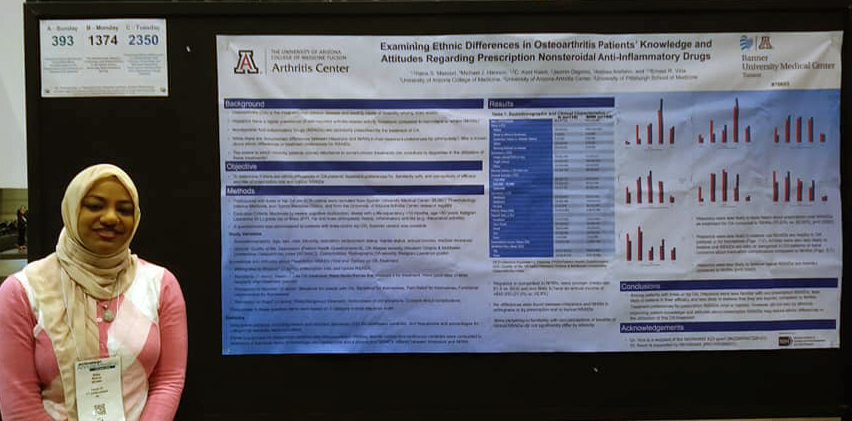Knowledge, attitudes about prescription NSAID use for OA varies by ethnicity
CHICAGO — Hispanic patients with osteoarthritis were less likely than non-Hispanic white patients to believe that prescription NSAIDs could help or harm them, according to research presented at the ACR/ARHP 2018 Annual Meeting.
Hana Masood, MD, MBA, second-year fellow at the University of Arizona in Tucson, said the findings underscore the need for clinicians to spend more time educating Hispanic patients about the medications to help prevent ethnic disparities in NSAID use and potential clinical outcomes.
“Some patients may not take NSAIDs seriously because many of them can be obtained over-the-counter,” she told Healio Rheumatology. “They might not realize that there are prescription doses that could be more beneficial. Clinicians should educate patients about the benefits, but equally about the harms.”
According to study results previously reported at the EULAR Annual Congress, about 67% of the increased risk for cardiovascular disease associated with OA was attributed to NSAIDs. In addition, more than 90% of total effects for ischemic heart disease and stroke was linked to NSAID use.

For the current study, Masood and colleagues administered a questionnaire to 119 Hispanic patients and 186 non-Hispanic white patients with chronic pain caused by knee or hip OA to assess their familiarity and perception of both prescription oral and topical NSAID use, as well as their willingness to receive the medications. Hispanic patients were younger (61.5 years vs. 65.6 years) and less likely to earn an annual income of $40,000 or more (21.6% vs. 55.8%) compared with non-Hispanic white patients.
Although there were no significant differences in patients’ willingness to try prescription oral or topical NSAIDs, Hispanic patients were less likely to be familiar with prescription oral NSAIDs as a treatment for OA (75.22% vs. 85.95%) and to believe that oral NSAIDs are helpful against OA (P = .0104) or that oral NSAIDs would be beneficial to them (P = .0223). They were also less likely to perceive prescription oral NSAIDs (P = .0009) and topical NSAIDs (P = .0040) as risky or dangerous and were less likely to be concerned about the complications of prescription oral NSAID use (P = .0402) compared with non-Hispanic white patients.
“They didn’t think they were helpful, and they didn’t think they were risky or dangerous, so they might as well be perceived as candy,” Masood said.
There was no difference between the groups about the familiarity and perceived benefits of prescription topical NSAID use.
“Out of all of this, what we took away was that we really need to educate our patients,” Masood said. “There are very good benefits from prescription NSAIDs, both oral and topical. But they do have their harms, so we don’t want patients to take them lightly either.” – by Stephanie Viguers
Reference:
Masood H, et al. Abstract 2350. Presented at: ACR/ARHP Annual Meeting, Oct. 20-24, 2018; Chicago.
Disclosure: Masood reports no relevant financial disclosures.

